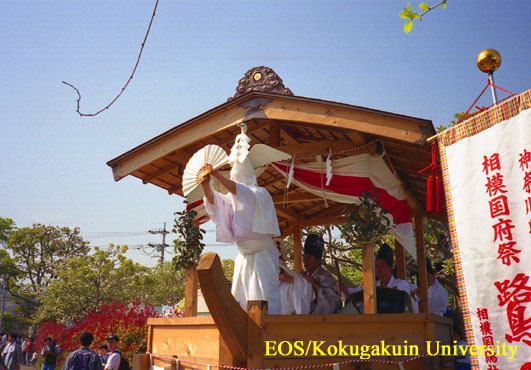- トップ
- Encyclopedia of Shinto
- Sagi-odori
Encyclopedia of Shinto
| Main Menu: | |
| Links: |
詳細表示 (Complete Article)
| カテゴリー1: | 5. Rites and Festivals |
|---|---|
| カテゴリー2: | Performing Arts |
| Title | Sagi-odori |
| Text | "Heron dance." This folk ritual performance is a type of furyū dance also known as sagimai. Sagi-odori originated from dances performed to musical accompaniment at Kyoto's Giongoryōe observances, which evolved into the festival of the city's Gion Shrine (now called Yasaka Jinja). During the Muromachi period the dance spread around Japan as the national influence of the Gion Shrine grew and festivals based on the Gion gyoryōe were disseminated throughout the country. A sagimai is performed as part of the July festival at the Yasaka Shrine in Tsuwano, Shimane Prefecture. The shrine was originally called Gion Shrine. The sagimai performed there is said to have come from the Gion goryōe of Yamaguchi during the Temmon era (1532-1555). It was subsequently discontinued, only to be revived in the seventeenth century on the model of the Kyoto observances. The Tsuwano sagimai is performed by two dancers, both of whom wear wooden headdresses made to resemble the sagi (heron) and have wooden wings attached to their shoulders. The dance is performed to the accompaniment of music (flute, tsutsumi hand drum, taiko drum, and bells) and singing. The dancers are accompanied by two baton twirlers and two players of small kakko drums. Decorative large and small umbrellas (kasaboko) are also brought out as part of the dance. — Yonei Teruyoshi |




